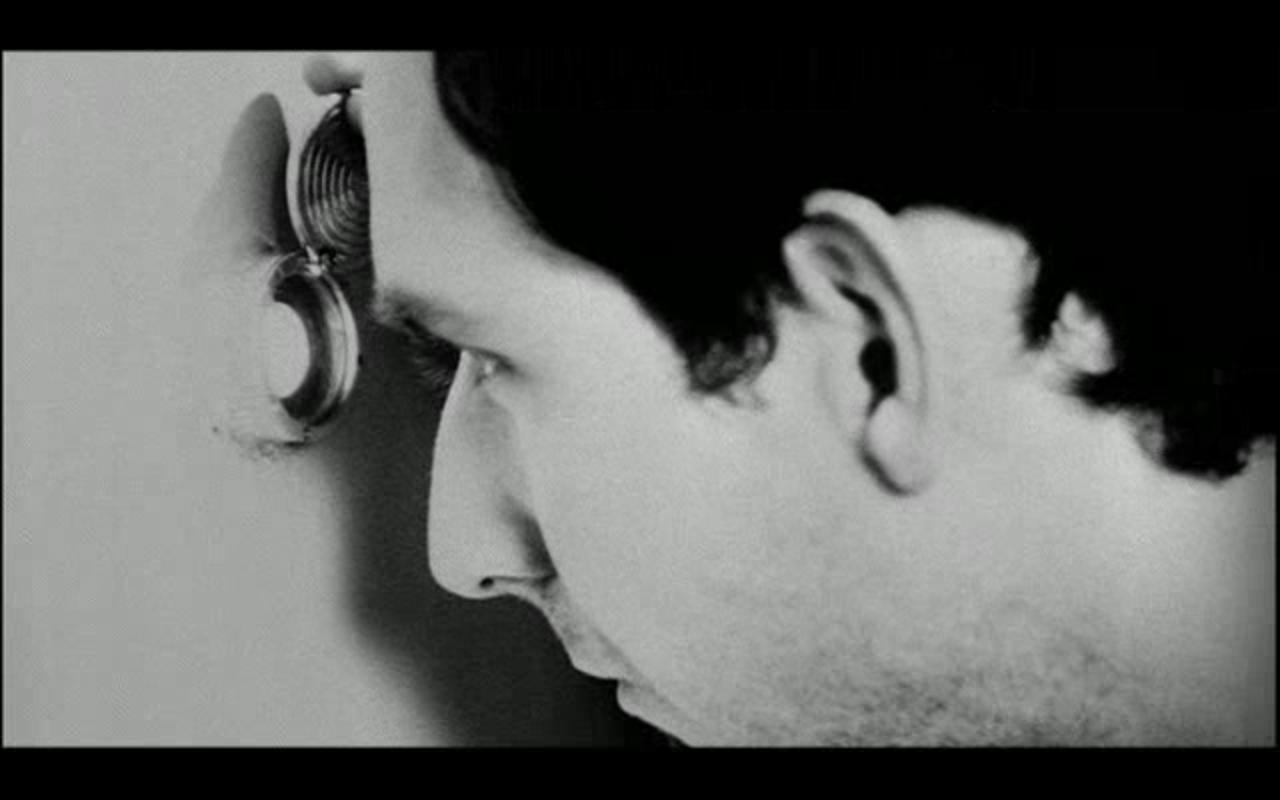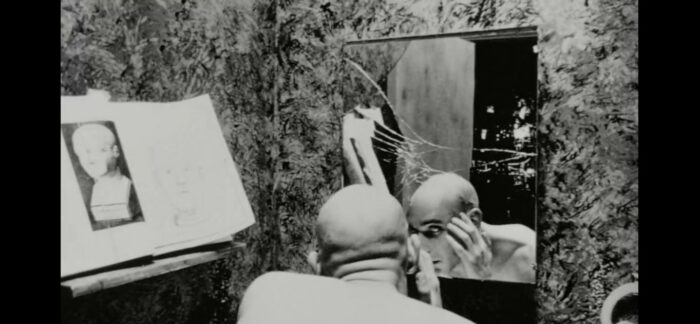“When I was a little kid, my mother warned me not to stare at the sun. So, once, when I was six, I did.”
This voiceover line explains all we need to know about the brilliant, broken mathematician at the center of Darren Aronofsky’s 1998 directorial debut, Pi. Max Cohen, the mathematician played by Sean Gullette, spends his days in a run-down apartment in New York’s Chinatown. Using his skill, Max begins to detect and utilize patterns in the world around him. These patterns range from the frequency of his panic attacks to the behavior of the stock market. When Max meets fellow mathematician and Kabbalah mystic, Lenny Meyer, he learns of a world of intrigue centered around the Hebrew Alphabet, the Fibonacci sequence, and the unspeakable name of God Himself.

Pi is staggeringly ambitious as a first film, using every forbidden and warned-against tool of film school with reckless abandon: black and white cinematography, film noir-esque voiceover, and convoluted plot points. Miraculously, Aronofsky elevates all these commonly risky conventions to create a cohesive, propulsive math thriller that questions the universe itself while delivering one of the most engaging Lovecraftian stories committed to film.
Despite his best efforts to remain reclusive, the world presses in on Max in small ways at first; a neighbor girl in his building challenging him with complex math questions, cigarette smoke and a stranger interrupting his monologuing, persistent calls from a prediction firm seeking his expertise. As the film begins to fixate on its central premise, Max too begins to tumble into an obsession, losing himself in a mysterious 216-digit number he believes to be the universal constant of reality. Like any good thriller, Aronofsky leaves clues to the film’s trajectory at the beginning of the film to be scooped up and decoded like Max’s own equations. The opening quote about staring at the sun and the nickname “Icarus” given to his mentor’s fish both allude to a man perilously close to letting his abilities, his knowledge, damage and destroy him.
Max Cohen and the plot of Pi are consistent with the tropes and conventions of the cosmic horror story. A protagonist, usually an explorer or some kind of academic, whose studies or circumstances push them into a confrontation with knowledge or thing so great and terrible that they either go mad or retreat into denial. Max, in his numbers, his investigation of pi, Fibonacci, and the common threads through all of them, gains an ultimate knowledge, and, in doing so, begins the work of his own undoing. Like Icarus, he soars high enough to touch the sun and is burned by his own hunger for knowledge. By bringing the Cosmic Horror narrative into an environment as dry and grounded as New York City and mathematics, Aronofsky revitalizes the conventions of the tale and creates a believable parable about the dangers of looking too closely at What Man Was Not Meant to Know. Even the film’s preoccupation with geometric shapes such as spirals and rectangles has echoes of Lovecraft’s persistent obsession with the minding bending effects of unusual geometries and their maddening effect on anyone who witnesses them.

The inclusion of Jewish mysticism may seem jarring at first, but there’s a reverence for the unknowable deeply embedded into Hebrew theology. It is common in Talmudic tradition to never read aloud the four-letter Hebrew word for God, known as the Tetragrammaton (which, when phonetically translated to English becomes Yahweh). Instead, it is replaced with an honorific such as “My Lord” or “Holy One.” This relationship to the elusive nature of divine knowledge is further illustrated by the Talmudic legend of Pardes, a story in which four rabbis enter the Pardes, which is the font of all knowledge and the root word for the English word “paradise”. When they enter and gaze upon God, the rabbis react differently. The first rabbi dies instantly, the second goes mad, the third becomes a heretic, and only one rabbi leaves the Pardes unscathed. Even to glimpse the almighty is to risk losing one’s mind, one’s faith, and one’s life. In spite of this tradition, the character of Lenny and his co-conspirators enlist Max’s help in translating a 216-letter sequence into the Jewish alphabet to hopefully discover the true name of God in the mystical tradition of the Shem ha-Mephorash, or “explicit name,” a term for the hidden names of God dating potentially as far back as the year 10 CE.
As Max’s own intellectual curiosity and pressure from Lenny push the story forward into increasingly dangerous and absurd new depths, the one voice of caution comes from Sol, Max’s elderly mentor who was rendered home-bound after a stroke. Of course, Max ignores his warnings and pushes the math even further.
The use of the Fibonacci sequence, a key number in the principles of the Golden Ratio and the Golden Spiral expands the film’s deep logos further as Max begins to see examples of the Spiral throughout nature, even down to the single cell. The spiral as a single can represent the downward trajectory of Max’s sanity as he plummets towards the dark heart of his numerical mystery.

Aronofsky pulls all these massive concepts and themes into a complex story, and accentuates it with a formally simple cinemascape of 16mm black and white and uses a viscerally affecting score from Clint Mansell and sound design from Brian Emrich to keep the overly heady dialog and themes rooted into the aggressive decaying of Max’s sanity and health. There are seeds of Aronofsky’s entire creative oeuvre in Pi, as the film juxtaposes human emotion with deeply unsettling imagery, obsession with physical transformation, and the desperation of quiet people with their ultimate undoing. Max Cohen is the blueprint for Randy “The Ram” Robinson, Nina, and the hungry wanderers of Requiem for a Dream. It also beautifully encapsulates Aronofsky’s persistent obsession with telling challenging stories and discussing difficult concepts within the confines of a Damn. Good. Story.




I loved this